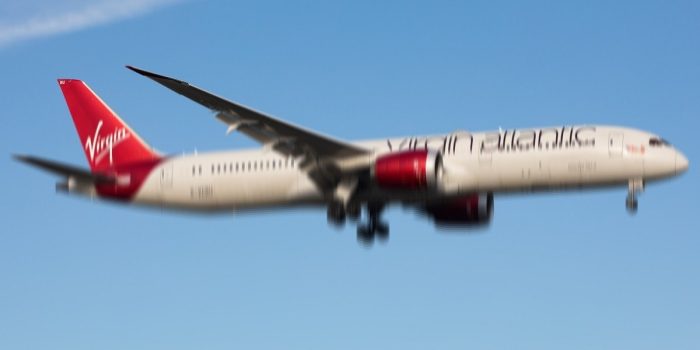Over the past weekend, a significant jet stream developed over the mid-Atlantic region, causing a remarkable phenomenon: propelling specific eastbound commercial flights to speeds surpassing the sound barrier. One Virgin Atlantic flight, departing from Washington Dulles International Airport to London’s Heathrow Airport, achieved a ground speed of 802 miles per hour, landing 45 minutes earlier than scheduled.
In total, three commercial jetliners experienced extraordinary speeds within the jet stream, which reached a staggering 265 mph, far exceeding the average jet stream speed of about 110 mph.

Despite traveling faster than the speed of sound relative to the ground, the planes did not break the sound barrier because they were moving within the jet stream’s flow, rather than traveling 767 mph faster than the surrounding air. This remarkable jet stream formation was attributed to the contrast between super-cold temperatures in the Northeast and warmer air in the South.
The juxtaposition of these temperature extremes created a crosswind effect that mitigated snowfall in the DC area, diverting the weather system that affected states to the north twice in one week. The National Weather Service’s Baltimore-Washington update account noted that the winds associated with this jet stream were the second-highest ever observed since records began being kept in the mid-20th century. The NWS warned eastbound travelers of significant tailwinds associated with the jet stream.
“For those flying eastbound in this jet,” the NWS account warned, “there will be quite a tail wind.”

While there have been no reports of issues experienced by flights flying west during this phenomenon, it’s common knowledge in aviation that flying against jet streams can result in longer flight times, increased fuel consumption, and turbulence. Meteorologist Lisa Green emphasized this point, noting that the jet stream’s effects were not universally beneficial and could present challenges for aircraft traveling in the opposite direction.
“Great for flight if it’s at your tail,” meteorologist Lisa Green tweeted. “Not so great, otherwise!”
Overall, this event underscored the dynamic relationship between atmospheric conditions and aviation, highlighting how natural phenomena such as jet streams can significantly impact flight operations and travel experiences.


